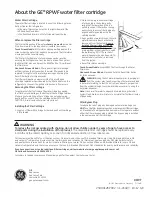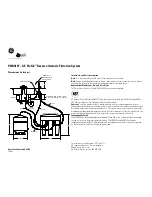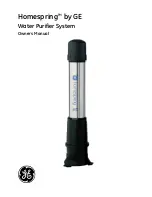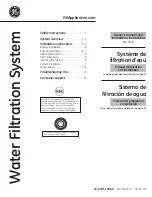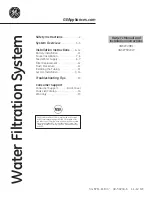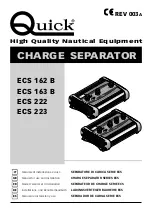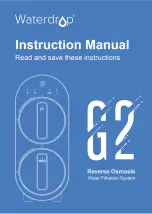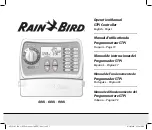
O). TROUBLESHOOTING
Cloudy Water or Algae Present
If algae is present, you must take steps to solve the reason it formed. First, brush the algae then add chlorine to the pool to
oxidize. Check filtering system and backwash or clean filter. Check water chemistry – especially pH. Make sure ion
level is in range. You may need to oxidize more frequently if problems persist.
If cloudy water is a problem, add chlorine to clear it up. Again, make sure all readings are in the proper range and filter is
clean. Usually cloudy water is from a poor filtering system. Make sure you oxidize on a timely basis. Never add
granular chlorine without dissolving it first or pouring it directly into the skimmer.
Can't Obtain the Proper Copper-Ion Level
If you are unable to obtain the proper ion level, check all of the following factors to solve the problem:
1.) High algae growth and cloudy water / Ion level too low.
A high algae growth or cloudy water will use up all
available copper and silver ions in the water that the unit can produce. This would result in a low ion level. Make sure
the pool water is balanced (see the rest of this section) and increase the power level to a higher reading. Oxidize the water
with chlorine.
2.) Correct sizing of the pool.
If the pool is larger than 50,000 gallons, you may need a stronger system.
3.) Scaled, dirty or worn electrodes / check electrode light comes on.
A blue-greenish coating around the electrodes
is normal. However, a build up of scale, dirt or debris around the electrodes can prevent the unit from producing ions.
Simply unscrew the electrodes and clean the buildup using an old toothbrush and use a lemon juice or muriatic acid/water
solution. See details in section M, page 11.
4.) Total Disolved Solids (TDS) is too low.
If your pool has brand new water in it, and you are unable to obtain a
desirable reading on the control unit, chances are the TDS level is too low. Usually, the total dissolved solids should be
between 300-2000 ppm.
, and tested once a year. For the system to perform on maximum capabilities (a pool with very
warm water or a pool that is close to the maximum number of gallons rated for the system), the TDS needs to be at least
500 ppm. If installing the unit on a brand new pool, you may need to have to raise the total dissolved solids level. THIS IS
ONLY NECESSARY IF YOU ARE UNABLE TO OBTAIN THE DESIRED COPPER-ION LEVEL. First, determine the
TDS level. To raise the TDS level, you need to add 1 pound of regular table salt to increase the TDS by 12 ppm per
10,000 gallons. Once the TDS level has reached 300 ppm you will be all set, because the TDS level always raises.
If the TDS is over 2,000, you should partially drain and refill with fresh water. This is standard pool water chemistry. If
the unit is being installed on a salt-water pool, the unit will work fine without any adjustments.
5.) Improper test kit readings.
Make sure you follow the proper Ion-Test kit procedures. Many people look at the side
of the test tubes instead of looking down from the top. Also, be sure to wait three minutes for the reagents to develop.
These reagents should be replaced yearly and kept out of direct sunlight and stored at normal room temperature. Failure
to do so will cause faulty readings. Never let the reagents freeze or be exposed to extreme heat.
6.) Improper pH readings
This is usually the main reason for a low copper-ion level. Make sure the pH is maintained
between 7.2- 7.6 , with the lower end preferred. When the pH goes over 7.8, the ions fall out of solution. Make sure your
test kit is updated with fresh reagents and kept out of direct sunlight and in normal room temperatures. Never mix
different manufacturer's reagents with the test kit.
7.) Too much chlorine in the pool
If the pool was just shocked with a lot of chlorine, this can give you an improper test
kit reading on the Ion Test Kit. The high chlorine level will "bleach" out the reading and appear to read zero.
12

















